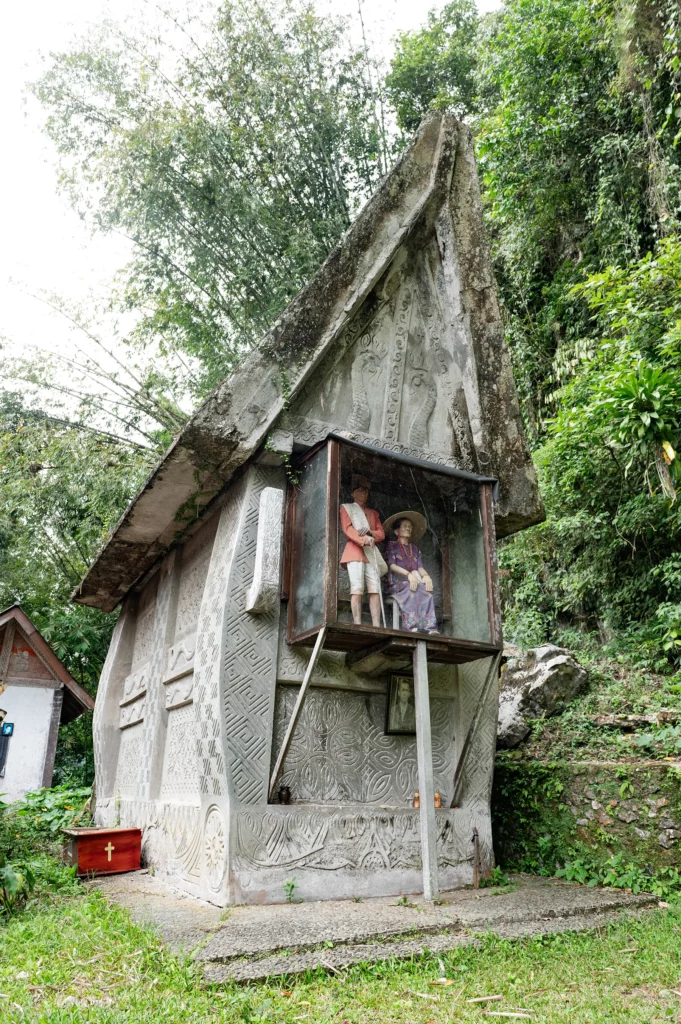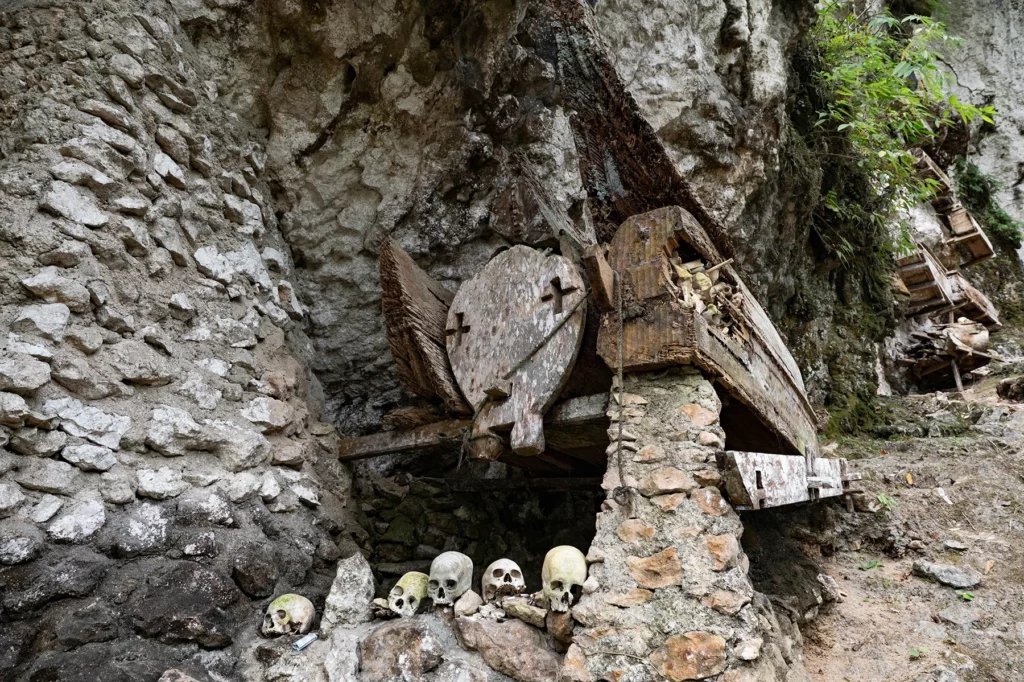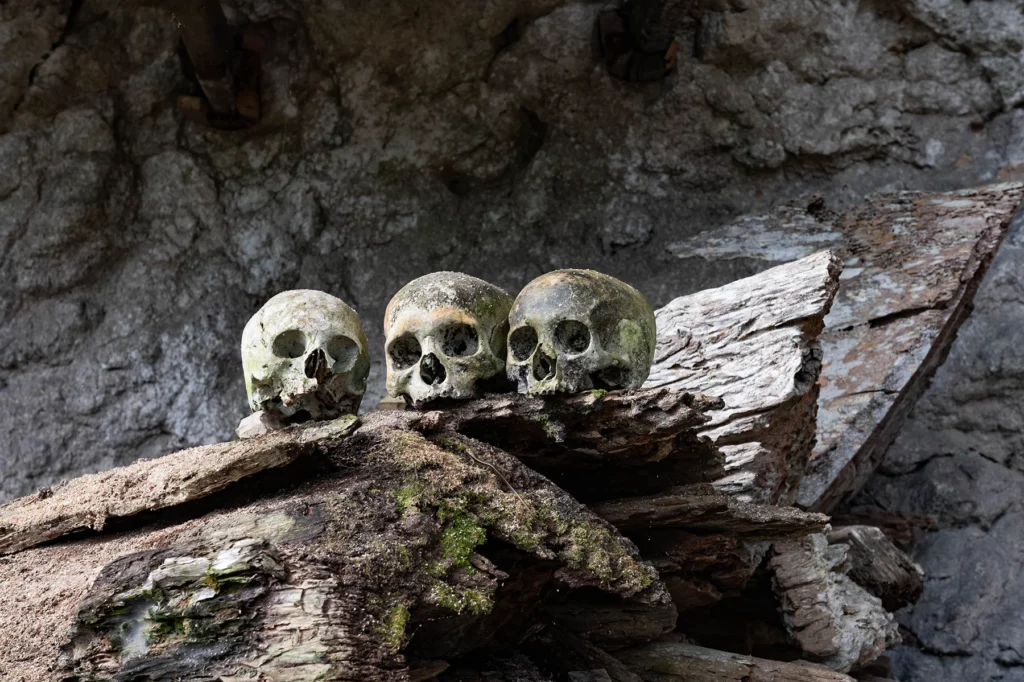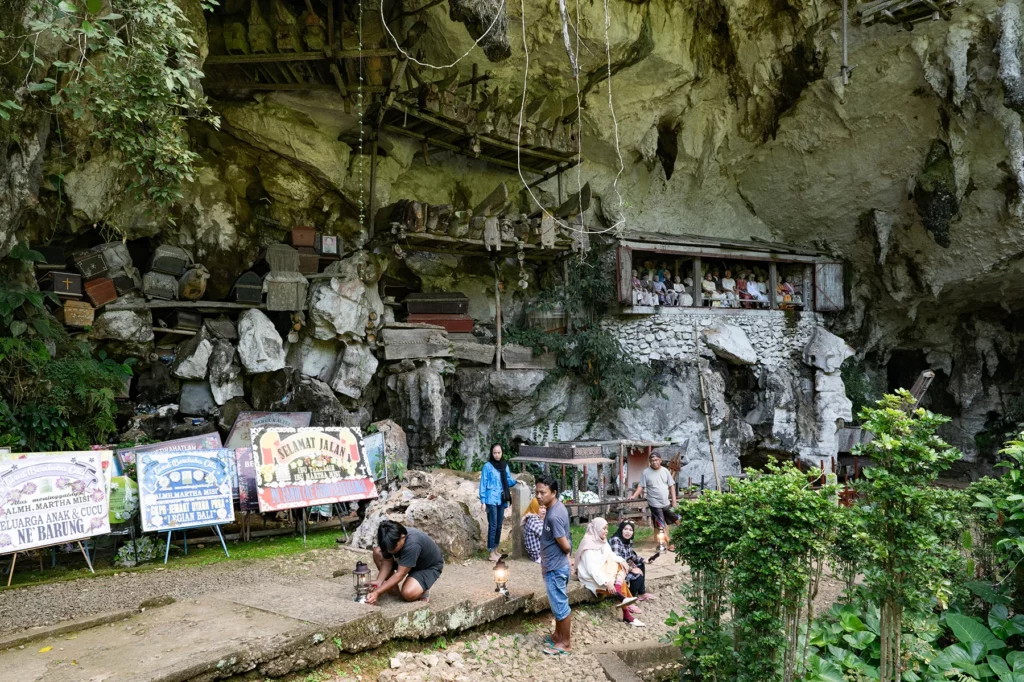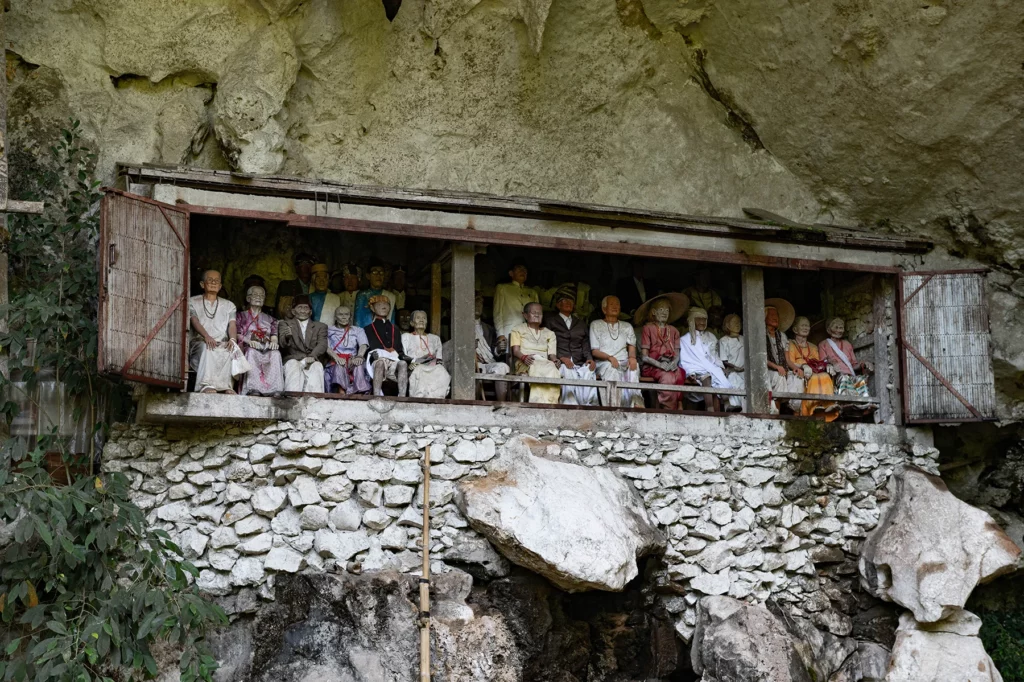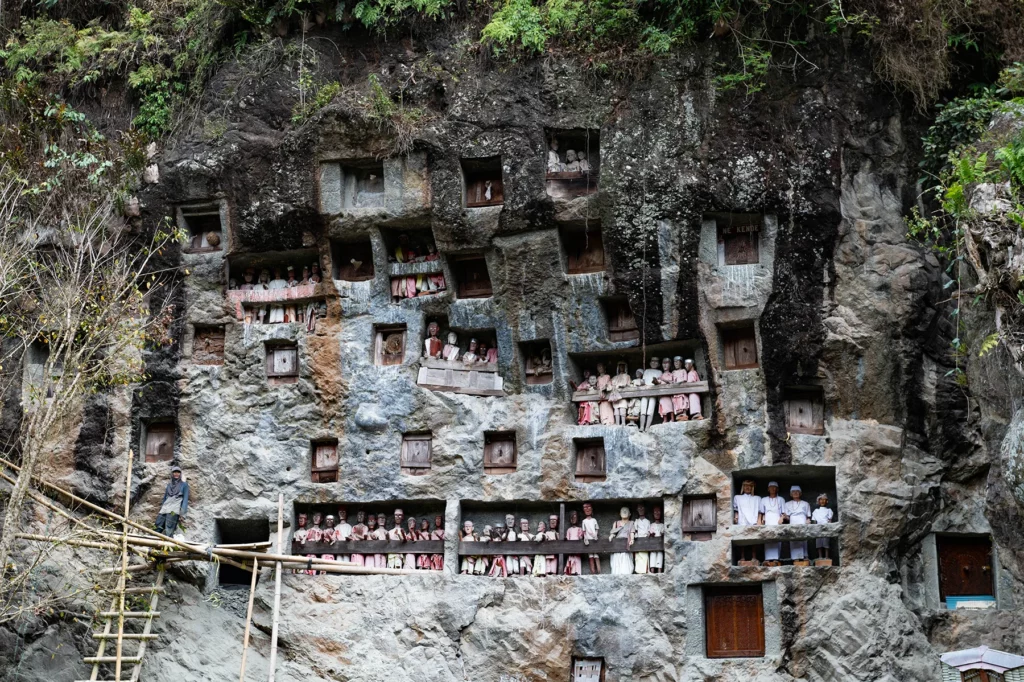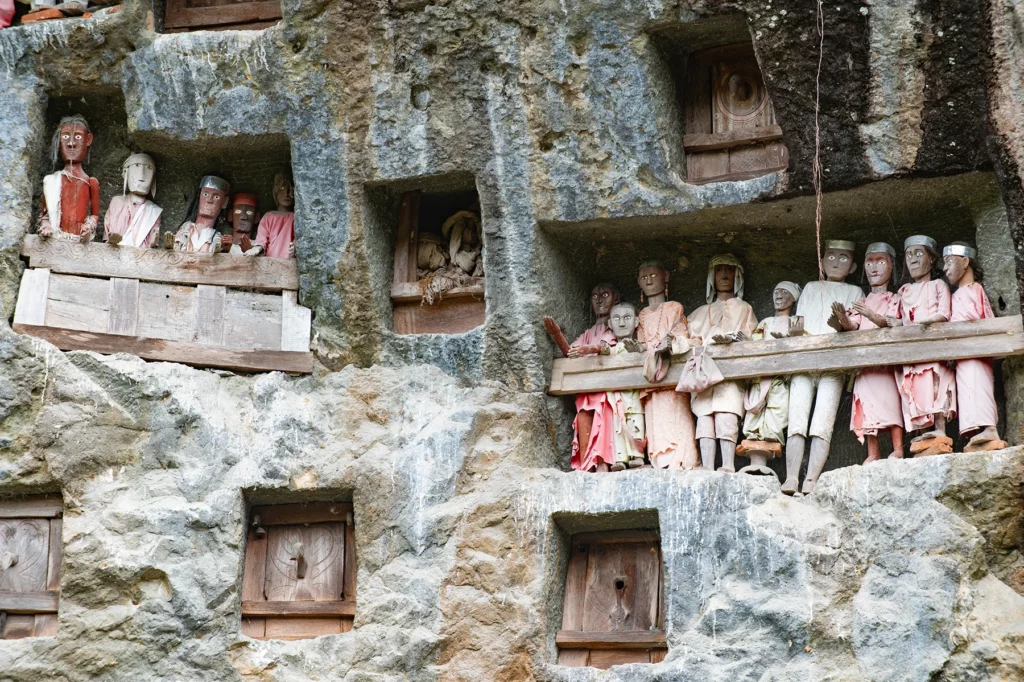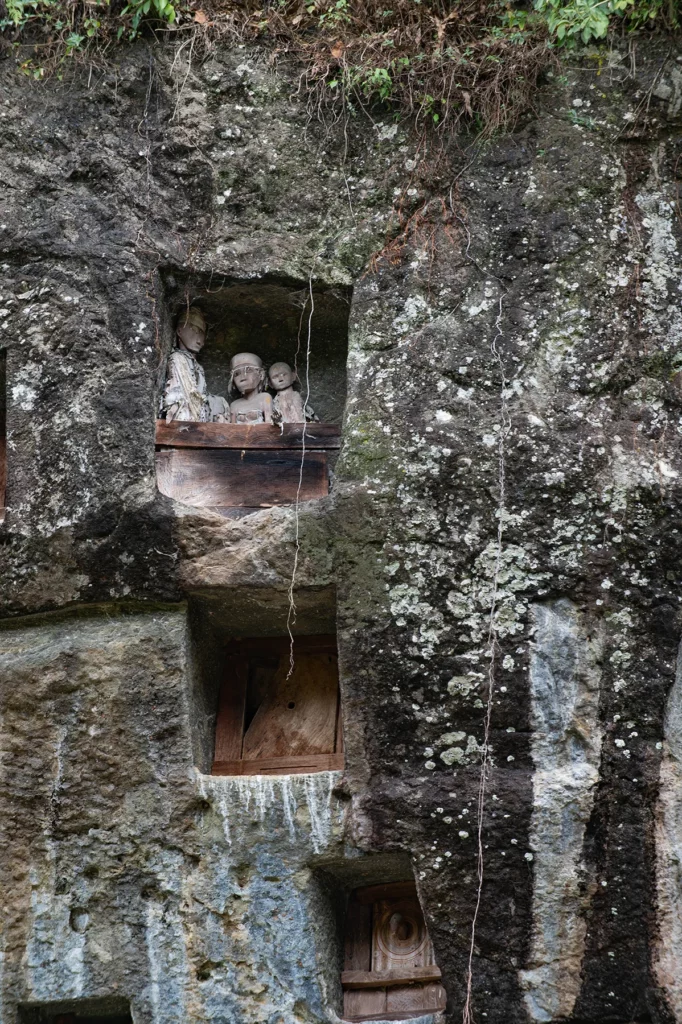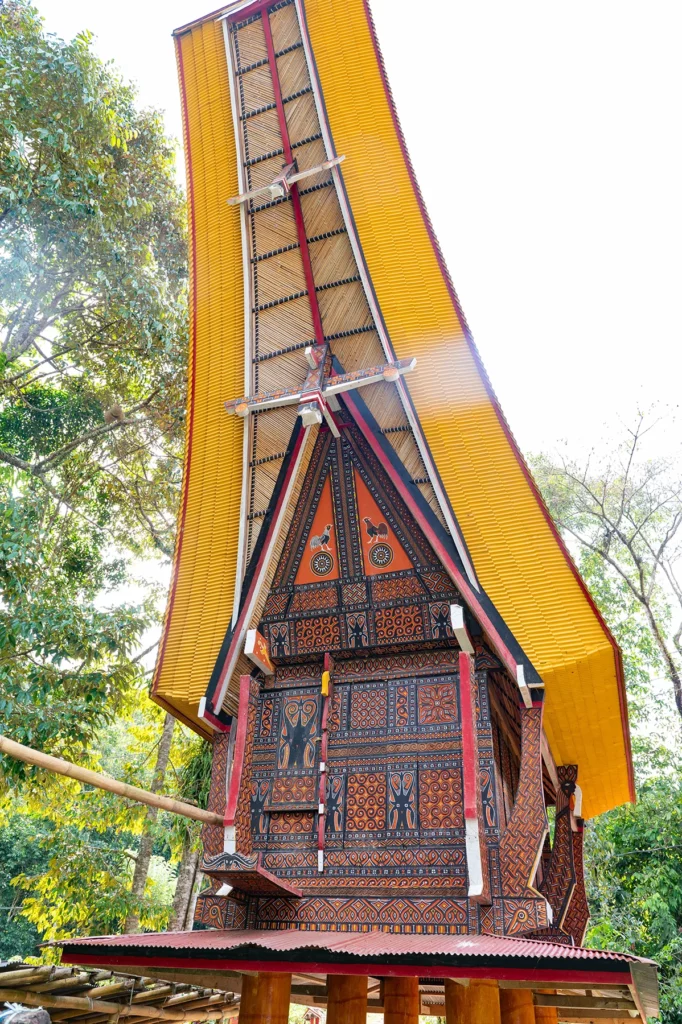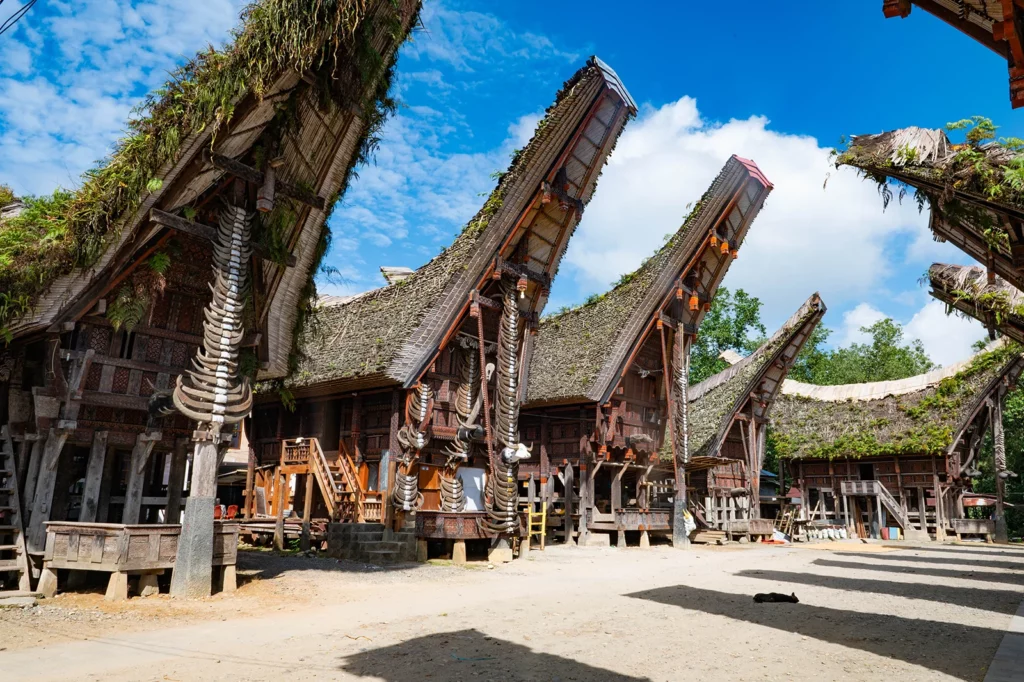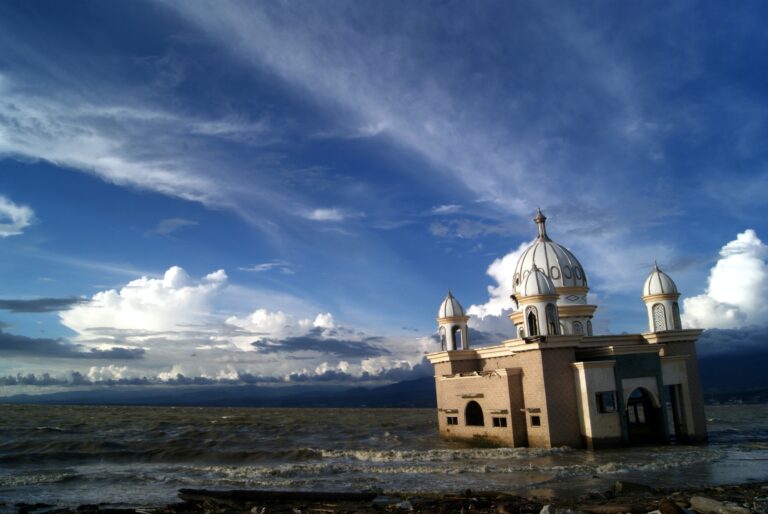In the Toraja region of South Sulawesi, highly unusual and unique funeral rituals take place. These practices are exclusive to the region and are rooted in the belief that when a person passes away, they are initially considered to be suffering from a fever rather than being declared deceased.
For the Toraja people, the concept of death as we typically understand it does not exist. Instead, they preserve the bodies of the deceased in their homes for weeks or even months, treating them as if they were still alive. Family members naturally interact with the deceased by speaking to them, offering food and even cigarettes. To preserve the bodies, formaldehyde is used, which halts the decomposition process and allows them to mummify. These preserved bodies are kept in well-ventilated rooms within the house to prevent any unpleasant odors.
The Creation of a Lifelike Statue
Following this belief, they craft a lifelike statue of the deceased from wood, with artisans intricately fashioning their hair from pineapple fiber. An accomplished sculptor painstakingly recreates the statue, which plays a central role in the upcoming ceremony. After the ceremonial proceedings, they place the statue inside the tomb alongside the deceased.
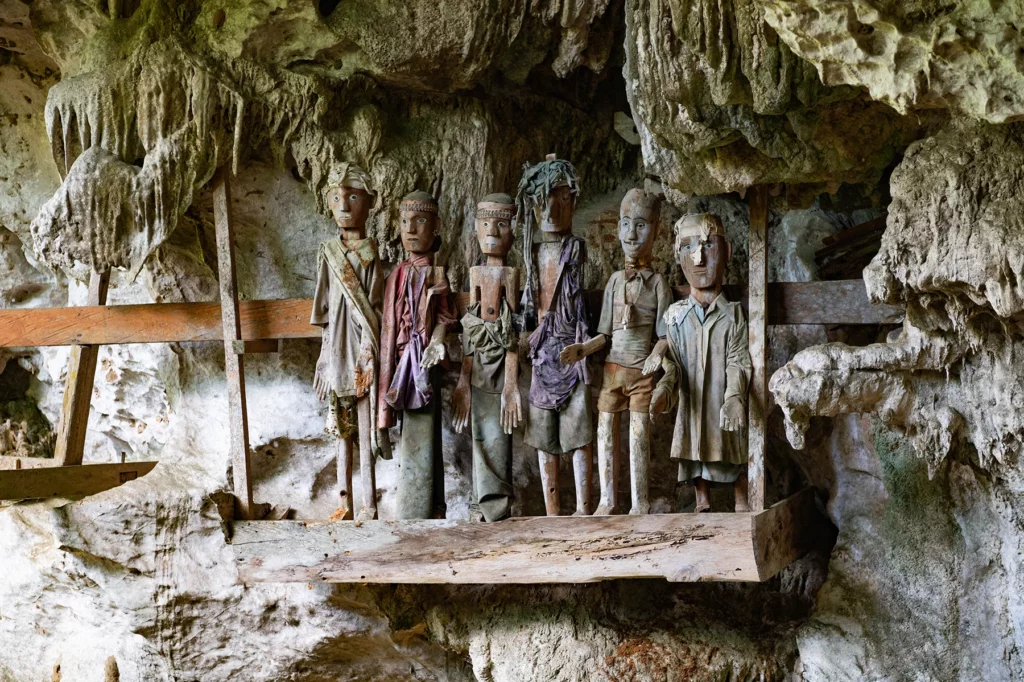
Animal Sacrifices for the Afterlife
Once they complete the statue, they commence a ceremony involving the sacrifice of animals. This ritual aims to assist the departed in their journey to the afterlife, known as Puya, the Toraja paradise. Pigs and buffaloes constitute the majority of sacrificial animals. In some cases, custom-built villages host numerous guests from the region who gather to witness this extraordinary event.
Before the ceremony begins, they house, wash, dress, and publicly display the deceased’s body. They present food offerings just before commencing the initial funeral feast, symbolizing the transition from life to death.
The ceremony unfolds, transforming the heart of the village into a symbolic slaughterhouse where the number of sacrifices can vary. They use machetes to swiftly end the lives of the sacrificial animals. Notably, they believe that the manner in which the buffalo falls after being sacrificed foretells the future harvests. They carefully collect the blood of these animals, cook it, and consume it during the ceremony, typically carrying it in bamboo containers.
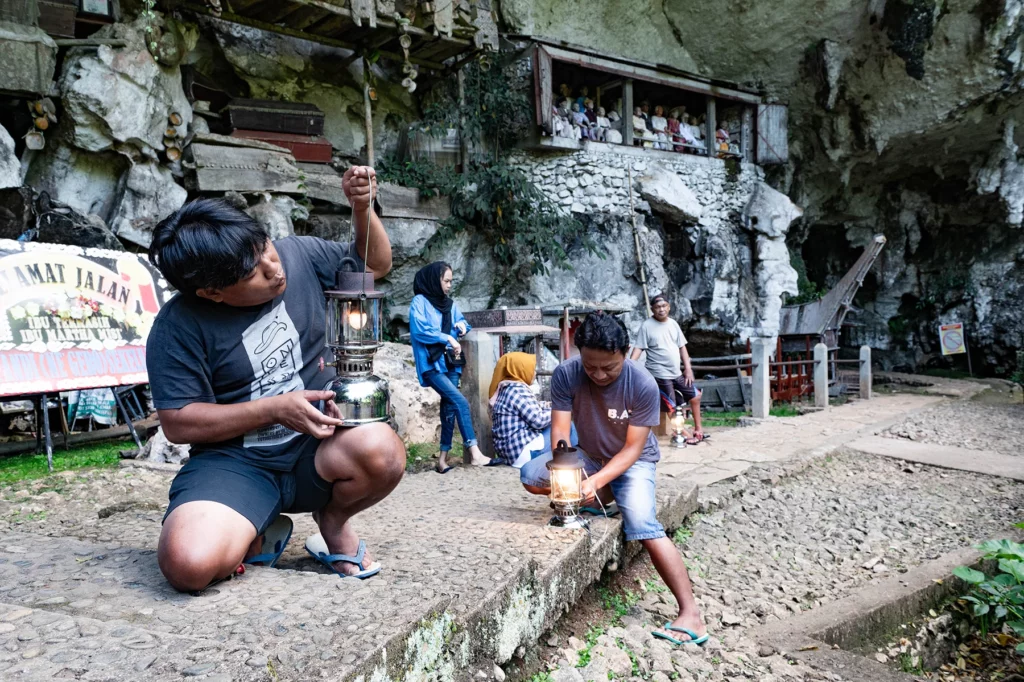
Transition to Joy
Once they conclude the sacrifices, offerings, songs, and dances, they believe that the soul ascends to the heavens. That’s why this funeral ritual in Toraja is so special, the atmosphere changes dramatically, with pallbearers and the procession becoming joyful, engaging in activities like jumping, object tossing, and revelry. Sorrow no longer has a place in this celebration.
Guardians of the Village and Final Resting Places
They then place the coffin on the mountainside overlooking the village, where it becomes a benevolent observer. The coffins are then placed in a cave, suspended alongside a cliff or put in cavities carved into the rock. According to Toraja beliefs, children who pass away at a young age are thought to lack a soul and are placed inside the trunks of tall trees, where they can grow and eventually reach the sky.
